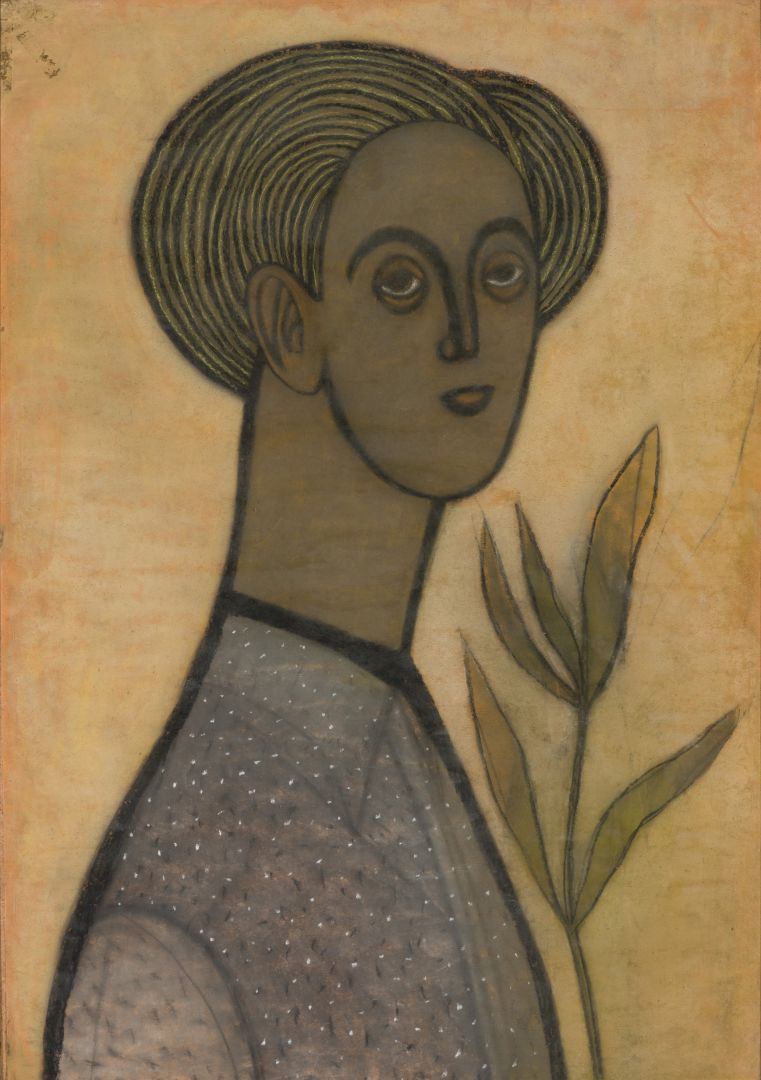The Experimental Youth
Self-portrait with a Lily
VAJDA Lajos
Zalaegerszeg, 1908 – Budapest, 1941
Self-portrait with a Lily, 1936
One of the most defining experiences in Vajda’s life was the time he spent in Paris in the first half of the 1930s, together with his friend, Dezső Korniss, where they discovered surrealism, Russian avant-garde film and the collections of folk art in the museums. When they returned to Hungary, in the small town of Szentendre, Vajda and Korniss began a campaign to collect motifs, which processed elements from all the different cultural traditions in the town. The aim of their work, which they defined as a “constructive surrealist thematic”, was to forge a synthesis between ancient folk-art forms and the modern avantgarde approach, with which they hoped to devise a new way of seeing, following the model that Béla Bartók had used with music. One of the first works Vajda produced under this programme was his Self-portrait with a Lily, which unifies the prophetic attitude of artists’ self-portraits with the stylised, sacral forms of Pravoslav icons. The composition, built up from separate planes, avoids all narrative components, and only the flower refers to the mission of the artist, which is to create harmony between humanity and the world.
